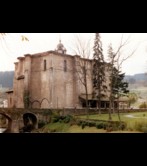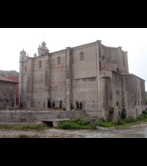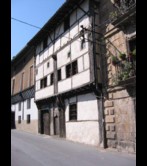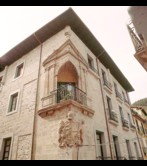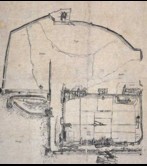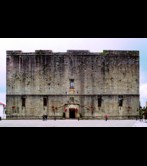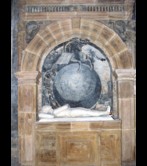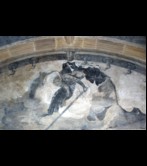Art and architecture
Gipuzkoa's monumental building
The economic development linked to iron, ship building and trade, the revenue from America and the fortune of many noble families at Court explain the many monuments to be found in the province, thanks to the widespread building of parish churches, palaces, urban and rural houses, convents, the University, etc. at a very specific time in the history of art: the Renaissance.
Religious Architecture
The building of the period followed a general pattern of development. There was no episcopal seat or religious orders but it took place within the context of the counter-Reformation, without a clearly defined capital or great noble titles, but with numerous villas and other places that formed a higher social stratum, with the parish church be an important factor in local identity. It should be borne in mind that the majority of the patrons (owners, for want of a better word) were also the councillors. It was they who elected parish priests and took the initiative when it came to construction and who expressed their power through buildings.
Urban civil architecture
The Casa Torre (town house) was a key feature of domestic architecture. Stripped of its military function, it was a symbol of its owners economic and social success. There were also palaces. Both of these often reflected the coming together of two or more lineages and what was the new urban oligarchy. Some are Gothic, others Renaissance in style, and some have mudejar (Arab-Spanish) brickwork features. There are many examples, many of high quality, for example, the Gothic palace of Lili in Zestoa; Igartza, in Beasain and Lazarraga in Oñati.
After a series of fires at the end of the 15th century, people began to build houses of stone and brick, only using wood for the beams. As the population grew and there was less and less space within the city walls, and also less risk of being attacked, there was a tendency to build on top of the city walls and to make taller houses. The wide eaves of the houses in Pampinot street, in the old part of Hondarabia, is spectacular. Others that stand out are Bergara, Oñate and Segura. Segura, the house of Ardixarra has retained all the characteristics of the 16th century bourgeois home.
The most outstanding example of public architecture is the University of Oñati. It was established by Rodrigo Mercado de Zuazola of Oñati, who later held high ecclesiastical office. Students were taught at the university from 1548 until 1901. Its plateresque doorway is particularly noteworthy.
Rural civil architecture
In rural districts, during the first half of the 16th century there was an explosion of building of caseríos (large farmhouses). These are buildings of surprisingly high quality, even better than those built in later centuries. Even the stone houses have a wooden framework with a cider press built into the structure. They were two-storey buildings, with the ground floor for the family and domestic animals and the upstairs floor for the press and for storing the harvest. They were very large (300 m² per floor in general) but only a fifth of that was for the family.
Military architecture
As for military architecture, of the castles captured from the King of Navarra in 1200, only those linked to frontier villas remain: the Donostia castle of Mota and the one at Hondarribia. Both were extensively altered during the reign of Carlos V, in the first half of the 16th century, and later in the 18th century. In Hondarribia, on the Cabo de Higer, there’s also a small castle built in the second half of the 16th century to defend against pirates.
Further informarion here: "Fortifications in Gipuzkoa: 16th - 19th centuries" (Bertan Colection).
Sculpture and Painting
Renaissance sculpture in Gipuzkoa is primarily religious. The most notable are the many altarpieces, sculptured groups and, in a few noteworthy cases, tryptychs and tombs. Among the doorways, the church of Santa Maria of Deba stands out for its extensive iconography. Some artists from Gipuzkoa were already becoming known during the Renaissance, such as Andrés de Araoz, Juan de Anchieta and their disciples Ambrosio de Bengoechea, Jerónimo de Larrea and Juan de Iriarte.
Renaissance painting in Gipuzkoa doesn’t bear comparison with the sculpture or architecture, neither in the works nor in the artists. The works that remain were mainly imported which, in the case of decorative furniture, are mainly Flemish – and very occasionally Italian - tryptychs and panels, the work of many authors,. Even more rarely they brought in works by known Spanish artists. In Renaissance Europe the mural was at the height of its development. In Gipuzkoa, however, it was just a cheap alternative to sculpture. Some significant works have recently been discovered, such as the painted grisaille altarpiece at Larraul, or the Soledad Chapel in the church of San Sebastián of Soreasu in Azpetitia.
Further informarion here: "Church dorways in Gipuzkoa" (Bertan Colection).
